2002_06_28_mtb_intrnlrp
Create successful ePaper yourself
Turn your PDF publications into a flip-book with our unique Google optimized e-Paper software.
United States<br />
Environmental Protection<br />
Agency<br />
Office of Water<br />
Washington, D.C.<br />
EPA 832-F-99-020<br />
September 1999<br />
Storm Water<br />
Management Fact Sheet<br />
Internal Reporting<br />
DESCRIPTION<br />
Internal reporting provides a framework for<br />
"chain-of-command" reporting of storm water<br />
management issues. Typically, a facility develops a<br />
Storm Water Pollution Prevention Team (SWPPT)<br />
concept for implementing, maintaining, and revising<br />
the facility's Storm Water Pollution Prevention Plan<br />
(SWPPP). The purpose of identifying a SWPPT is<br />
to clarify the chain of responsibility for storm water<br />
pollution prevention issues and to provide a point of<br />
contact for personnel outside the facility who need<br />
to discuss the SWPPP.<br />
APPLICABILITY<br />
The U.S. EPA first identified internal reporting as a<br />
BMP in the late 1970s. Currently, internal reporting<br />
has evolved into the development of a SWPPT for<br />
facilities implementing a SWPPP as part of their<br />
NPDES storm water discharge permit. This<br />
SWPPT concept is a new and innovative part of the<br />
SWPPP.<br />
ADVANTAGES AND DISADVANTAGES<br />
Internal reporting is an essential part of any good<br />
record keeping program. When properly<br />
implemented, an internal reporting program can<br />
clearly define individual’s roles and responsibilities<br />
for implementing and maintaining the SWPP,<br />
thereby making it easier to prevent and contain<br />
potential storm water contamination.<br />
Limitations involved in developing an internal<br />
reporting system are:<br />
• Corporate commitment in designating<br />
appropriate funds may be lacking.<br />
• Inadequate staff hours may be available for<br />
proper implementation.<br />
• Low motivation from SWPPT members<br />
could inhibit the transfer of key storm water<br />
pollution information.<br />
KEY PROGRAM COMPONENTS<br />
When establishing an internal reporting structure, it<br />
is important to select appropriate personnel at all<br />
levels to serve on the team. Both team and<br />
individual responsibilities should be designated with<br />
clear goals defined for proper storm water<br />
management. Internal reporting should be tied to<br />
other baseline BMPs, such as employee training,<br />
individual inspections, and record keeping to ensure<br />
proper implementation. Figure 1 illustrates an<br />
example SWPPT organization chart.<br />
IMPLEMENTATION<br />
The key to implementing internal reporting as a<br />
BMP is to establish a qualified SWPPT. When<br />
setting up a SWPPP, it is important to identify key<br />
people on-site who are most familiar with the<br />
facility and its operations and who can also provide<br />
adequate structure and direction to the facility's<br />
entire storm water management program.<br />
The performance and effectiveness of a facility’s<br />
internal reporting system is highly variable and<br />
dependent upon several factors. Key factors<br />
include:
FIGURE 1 EXAMPLE OF A SWPPT ORGANIZATION CHART<br />
C<br />
Commitment of senior management.<br />
REFERENCES<br />
C<br />
C<br />
C<br />
Sufficient time and financial resources.<br />
Quality of implementation.<br />
Background and experience of the SWPPT.<br />
To ensure that an internal reporting system remains<br />
effective, the person or team responsible for<br />
maintaining the SWPPP must be aware of any<br />
changes in plant operations or with key team<br />
members to determine if modifications must be<br />
made in the overall execution of the SWPPP.<br />
COSTS<br />
Costs associated with implementing an internal<br />
reporting system are those associated with<br />
additional staff hours and related overhead costs.<br />
Annual costs can be estimated using the example<br />
shown in Table 1. Table 2 can be used as a<br />
worksheet to calculate the estimated costs for an<br />
internal record keeping program.<br />
1. U.S. EPA, 1981. NPDES BMP Guidance<br />
Document.<br />
2. U.S. EPA, 1992. Storm Water<br />
Management for Industrial Activities:<br />
Developing Pollution Prevention Plans and<br />
Best Management Practices. EPA 832-R-<br />
92-0<strong>06</strong>.<br />
ADDITIONAL INFORMATION<br />
Center for Watershed Protection<br />
Tom Schueler<br />
8391 Main Street<br />
Ellicott City, MD 21043<br />
Northern Virginia Planning District Commission<br />
David Bulova<br />
7535 Little River Turnpike, Suite 100<br />
Annandale, VA 22003
TABLE 1 EXAMPLE OF ANNUAL INTERNAL REPORTING COSTS<br />
Title Quantity Average<br />
Hourly<br />
Rate ($)<br />
Overhead*<br />
Multiplier<br />
Estimated<br />
Yearly Hours<br />
on SW<br />
Training<br />
Estimated<br />
Annual<br />
Cost ($)<br />
Stormwater Engineer 1 x 15 x 2.0 x 20 = 600<br />
Plant Management 5 x 20 x 2.0 x 10 = 2,000<br />
Plant Employees 100 x 10 x 2.0 x 5 = 10,000<br />
Total Estimated Annual Cost $12,600<br />
*Note: Defined as a multiplier (typically between 1 and 3) that takes into account those costs associated with payroll expenses, building<br />
expenses, etc.<br />
Source: U.S. EPA, 1992.<br />
TABLE 2 EXAMPLE OF ANNUAL INTERNAL REPORTING COST WORKSHEET<br />
Title Quantity Average<br />
Hourly Rate<br />
($)<br />
Overhead<br />
Multiplier<br />
Estimated<br />
Yearly Hours<br />
on SW<br />
Training<br />
Estimated<br />
Annual<br />
cost($)<br />
_________________ _______ x __________ x ________ x _____________ = ________ (A)<br />
________________ _______ x __________ x ________ x _____________ = ________ (B)<br />
________________ _______ x __________ x ________ x _____________ = ________ (C)<br />
________________ _______ x __________ x ________ x _____________ = ________ (D)<br />
Total Estimated Annual Reporting Cost ________ (Sum of A+B+C+D)<br />
Source: U.S. EPA, 1992.<br />
Oklahoma Department of Environmental Quality<br />
Don Mooney<br />
Water Quality Division, Storm Water Unit<br />
P.O. Box 1677<br />
Oklahoma City, OK 73101-1677<br />
Southeastern Wisconsin Regional Planning<br />
Commission<br />
Bob Biebel<br />
916 N. East Avenue, P.O. Box 1607<br />
Waukesha, WI 53187<br />
The mention of trade names or commercial products<br />
does not constitute endorsement or recommendation<br />
for the use by the U.S. Environmental Protection<br />
Agency.<br />
For more information contact:<br />
Municipal Technology Branch<br />
U.S. EPA<br />
Mail Code 4204<br />
401 M St., S.W.<br />
Washington, D.C., 20460<br />
United States Postal Service<br />
Charles Vidich<br />
6 Griffin Road North<br />
Windsor, CT <strong>06</strong>0<strong>06</strong>-7030


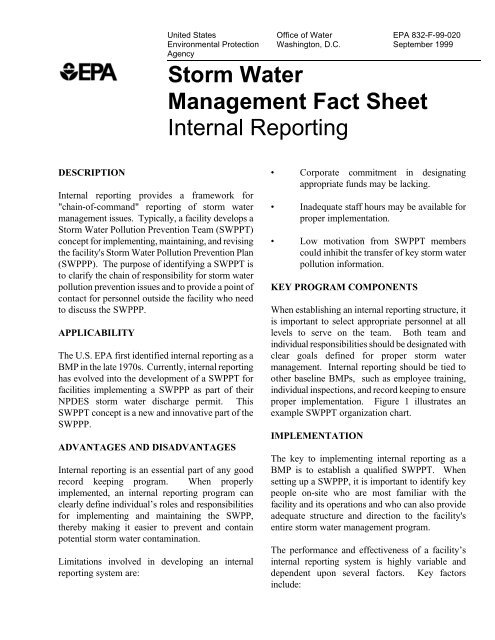

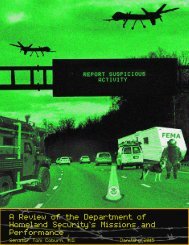

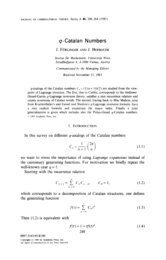
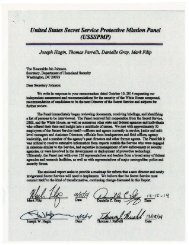
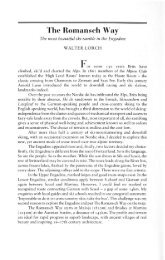
![55721335-d6fe09eb5ffdcc87dbf6c3f0b5bbda07d2261e98[1]](https://img.yumpu.com/56533583/1/186x260/55721335-d6fe09eb5ffdcc87dbf6c3f0b5bbda07d2261e981.jpg?quality=85)








